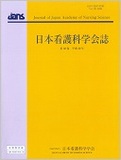Japanese
English
- 販売していません
- Abstract 文献概要
- 参考文献 Reference
要旨
目的:不妊治療を終結した女性が子どものいない人生を受け容れ,自分らしい生き方を見出す過程の多様な径路と多様な径路を辿る影響要因を明らかにし,求められる看護支援を検討する.
方法:子どもを得ず治療を終結した女性14名に面接調査を行った.分析手法は,複線径路・等至性モデル(TEM)を用いた.
結果:治療終結直後は,解放感・喪失感のアンビバレントな感情に揺れる.その後,子どもを諦めてよいかの葛藤を経て子どもを諦める.治療に取り組んだ人生を振り返りながら生き方を模索し,治療体験を肯定的に意味づけ,社会通念に囚われず子どものいない人生を前向きに捉えることにより,自分らしい生き方を見出す.この過程には,自信の回復,重要他者の承認や安定した関係性,ピアの存在,価値観の転換などが影響していた.
結論:夫婦ともに納得のいく受療と終結の支援,葛藤や治療体験の意味づけが続くことを理解した情報提供やモデル提示の必要性が示唆された.
Objective: The aim of the survey was to determine the diversified ways and influential factors of the process used by women who terminated infertility treatment without having a child to accept the rest of their childless lives, and find their own unique ways to live, in order to identify the nursing support required.
Method: We conducted an interview survey among 14 women who terminated infertility treatment without having a child. The trajectory equifinality model (TEM) was used for analysis.
Results: Childless women had ambivalent feelings that oscillated between freedom and loss immediately after terminating infertility treatment. They then struggled with thoughts about whether giving up a child would be right or wrong, which led to their decision to not have a child. They looked back on the treatment they received, sought a way of life, found a positive meaning in the treatment experience, and then began to think positively about their childless life, regardless of social standards, which made it possible for them to find their unique lifestyle. Influential factors in this process included the recovery of self-confidence, approval from and stable relationships with significant others, existence of peers, and a shify in values.
Conclusion: Results suggest that nurses need to assist childless women in undergoing and terminating fertility treatment such that they, along with their husbands, are satisfied, and to provide information and lifestyle models based on an understanding that their conflicts and attempts to find meaning in the treatment experience can continue even after terminating the treatment.
Copyright © 2018, Japan Academy of Nursing Science. All rights reserved.


